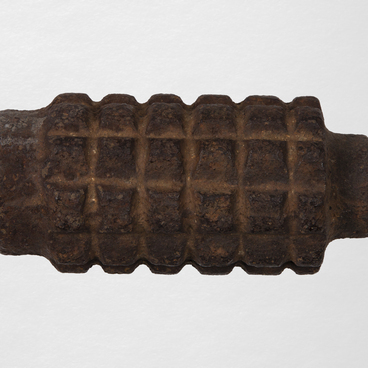In the collection of the Zimovniki Museum of Local History there is a revolver of the Nagant system. Two brothers, the Belgian gunsmiths Emile and Leon Nagant, designed it in 1877. The revolver became part of the armament of the Russian Imperial Army in 1895.
The first revolver of the Nagant system that appeared in the Russian army was assembled in Belgium from 39 parts. Special machines were brought from England to the Tula Arms Factory in order to establish the production of revolvers in Russia. Weapons were produced in Tula from 1898 until 1945, and during World War II revolvers of the Nagant system were also produced in Izhevsk.
The weapon was in demand due to its solid construction. It functioned under any conditions: severe frost, high humidity, dust or dirt did not prevent it from remaining in serviceable condition. Revolvers of the Nagant system rarely needed repair, even after long usage.
Unlike other types of pistols that existed at the time, the revolver of the Nagant system was light and compact, so it was easy to carry. The weight of a fully loaded pistol was 837 grams and the barrel was 11.4 centimeters long.
The cylinder of the Nagant could hold seven cartridges, and so it could fire seven shots, on average, in 15–20 seconds. The maximum range of the shot was about 100–150 meters.
Especially for the Russian army the gun was modified to use 7.62-caliber ammunition, slightly smaller than the standard size of the 1878 model.
The design had some peculiarities. For example, this revolver had no safety, but a special additional detail on the trigger guard, which protected it from accidental firing. The ramrod, a short metal rod near the barrel, was used not only to clean the gun, but also to eject spent cartridges from the cylinder.
Nowadays the revolver of Nagant system has several modifications: there are combat, civilian, sporting and signal models. The latter imitate the shot by means of a loud sharp sound.
The first revolver of the Nagant system that appeared in the Russian army was assembled in Belgium from 39 parts. Special machines were brought from England to the Tula Arms Factory in order to establish the production of revolvers in Russia. Weapons were produced in Tula from 1898 until 1945, and during World War II revolvers of the Nagant system were also produced in Izhevsk.
The weapon was in demand due to its solid construction. It functioned under any conditions: severe frost, high humidity, dust or dirt did not prevent it from remaining in serviceable condition. Revolvers of the Nagant system rarely needed repair, even after long usage.
Unlike other types of pistols that existed at the time, the revolver of the Nagant system was light and compact, so it was easy to carry. The weight of a fully loaded pistol was 837 grams and the barrel was 11.4 centimeters long.
The cylinder of the Nagant could hold seven cartridges, and so it could fire seven shots, on average, in 15–20 seconds. The maximum range of the shot was about 100–150 meters.
Especially for the Russian army the gun was modified to use 7.62-caliber ammunition, slightly smaller than the standard size of the 1878 model.
The design had some peculiarities. For example, this revolver had no safety, but a special additional detail on the trigger guard, which protected it from accidental firing. The ramrod, a short metal rod near the barrel, was used not only to clean the gun, but also to eject spent cartridges from the cylinder.
Nowadays the revolver of Nagant system has several modifications: there are combat, civilian, sporting and signal models. The latter imitate the shot by means of a loud sharp sound.



